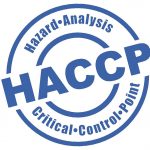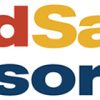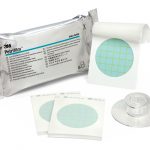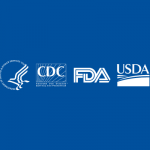Manufacturing large volumes of food product that must be safe for human consumption with finite resources is, simply put, a demanding responsibility. For many food brands, having dedicated production lines is not always an option, so lines are often shared amongst a variety of food products. A potential problem arises when products containing allergenic foods are manufactured on the same equipment as other products, and those allergenic foods are not meant to be declared in the product label. As a result, residues of the first product manufactured may move to the next product. Known as direct cross-contact contamination, this issue can have a severe adverse impact on allergic consumers.
Cross-contact contamination can occur at various stages of production, but it’s direct food cross-contact in shared production lines that is often found as a particularly significant food safety hazard. Addressing cross-contact through effective cleaning procedures is one of the most critical allergen management activities in establishing preventive controls and minimizing the potential of unintentional presence of food allergens. Allergen cleaning validation enables food manufacturers to evaluate that their cleaning procedure is adequate when it comes to removing ingredients from direct food contact surfaces.
Cleaning validation consists of generating data to demonstrate that allergenic foods are removed from direct food contact areas to a pre-defined acceptable level. A basic cleaning validation design consists of determining the residual level or presence of allergenic food before cleaning (baseline), and then assessing the level of the allergenic food after cleaning.
If the cleaning procedure exists in several steps (i.e., more than one rinse or purge, as with dry cleaning) additional testing to assess the level of allergens between cleaning stages and in the final product can also be incorporated. It is important to remember that a single validation study may not be applicable for an entire site operation. Different production lines within a food production site may require an individualized validation analysis. This determination will depend on the cleaning process as well as the formulation of the products being manufactured.
There are five important considerations for establishing a successful validation study:
- Set up a team and assign a leader to carry out the design of the validation. Involving relevant personnel with knowledge in the product formulation, manufacturing process, equipment design and cleaning and sanitation regimes may provide valuable insight to identify processes that should be included in the validation. It may also bring to light critical sampling points in the equipment that should be considered.
- Determine the scope of the study. This is where you describe and justify which equipment, utensils, cleaning regime and production processes will be validated. It may be wise to group different processes or select the worst-case scenario. For example, you might choose to focus on food production equipment regarded as hard to clean or equipment that contains the highest concentration of the allergenic food.
- Design a sampling plan. This is a critical prerequisite before starting a validation study. The plan should be clearly defined, with critical sampling points and locations prescribed to challenge the effectiveness of the cleaning regime and to find evidence of allergenic food presence. In both open equipment and equipment that will be dismantled as part of the cleaning regime, it is important to select sites where food can get trapped, as well as other sites that are hard to clean. Also consider other surfaces that can be a source of direct cross-contact like protective clothing and utensils. For clean-in-place (CIP) systems, wash water should be collected from the onset of cleaning and then at intervals leading up to the final rinse water. This helps to demonstrate that allergen food levels are diminishing, thereby validating the use of CIP analysis as a verification method. Note that it is important to consider that the sampling plan for the validation should also reflect the sampling plan that will be used during routine verification. Support from a statistician may facilitate the decision to define how many samples and type of samples (swabs, CIP or final product) should be collected for the validation and how many cleaning runs should be performed to demonstrate validity.
- Select a method of analysis. Validation and verification involve the use of a specific method to detect allergenic foods. The selected method should be validated as well, an undertaking most often done by the commercial supplier. Then it should be verified by the food processor that the method is fit for purpose, such that the allergenic food will be recovered and detected under the conditions in which samples are routinely collected. This ensures there will not be interference due to the food itself or due to cleaning chemicals. There are a variety of different analytical methods; most are based in technologies designed to detect proteins. Enzyme-linked immunosorbent assays (ELISA) and immune-based lateral flow devices (LFDs) offer detection of specific protein targets (i.e., egg proteins, milk proteins, peanut proteins) and are ideal for a validation study. ELISA can provide quantitative data from pre-cleaning, at various intervals during the cleaning process, at post-cleaning and at final product, offering a measurable level of the allergenic food during the cleaning process. Rapid detection through LFDs also allows food processors to assess the presence or absence of a specific protein or group of proteins, but different from ELISA, the result is only qualitative. In either case, these rapid tests may be used for both validation and routine verification. In addition, there are non-specific tests that can detect total protein that may be selected for a cleaning validation study. These tests do not provide specific information about the allergen to be managed, and thus may be more suitable for routine verification. During a cleaning validation study, it is important to include the test that will be utilized for verification and ensure it is also fit for purpose and detects the allergenic food to an appropriate pre-defined sensitivity. This is particularly important if the test is different from the analytical method chosen for cleaning validation.
- Establish acceptance criteria. Proteins from allergenic foods may cause an adverse reaction at very low levels. To date, there are very few regions in the world in which threshold or permitted levels for allergens in food are established. Each individual food manufacturer should define a criterion to establish when a surface is clean from allergens after routine cleaning. The limits that are set up should be practical but also measurable and verifiable, thus it is important to define a level with knowledge of the sampling and analytical method selected. The sensitivity of the analytical methods currently available may be used as a criterion to verify that levels of an allergen are under control if they fall below the limit of detection of the analytical method.
Once a cleaning regime has been validated and documented, routine allergen cleaning verification should be performed as part of a monitoring program to demonstrate that the cleaning process in place is effective and that the risk of direct cross-contact is consequently being controlled. The validation should be repeated at defined intervals, often once a year. However, it is expected that a cleaning verification will be performed after each production run and cleaning procedure in order to reflect that the validated cleaning process is still effective. Cleaning verification, along with other allergen management activities, strengthens implemented food safety programs and helps to protect consumers.







